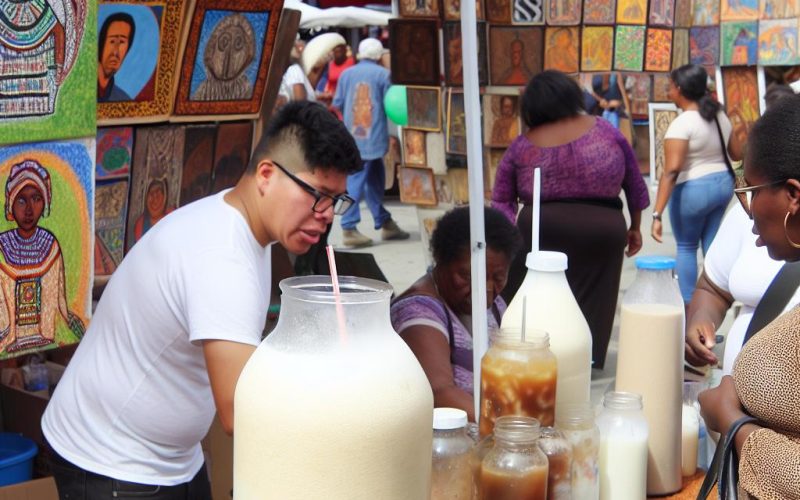Understanding Traditional Beverages: Horchata and Frescoes
Traditional beverages not only quench thirst but also offer insights into the cultural practices and the culinary history of a region. Two such delightful beverages are horchata and frescoes. They are beloved in various parts of the world, each characterized by unique ingredients and preparation methods that reflect their geographical and cultural origins.
Horchata: Origins and Variants
Horchata, a drink with a longstanding history, is known for its roots that trace predominantly back to Spain. The drink has grown in popularity and has been adapted across different cultures, giving rise to a variety of versions, each with its own distinct taste and composition.
Spanish Horchata: In Spain, horchata is traditionally made using chufa or tiger nuts. The nuts are soaked in water, ground, and then mixed with sugar to create a creamy and sweet beverage. This Spanish variant is cherished for its refreshing qualities and is often served cold to provide relief from the Mediterranean heat.
Mexican Horchata: In Latin America, particularly in Mexico, the concept of horchata was reinvented to suit local tastes and available ingredients. Instead of tiger nuts, rice became the primary ingredient. Mexican horchata incorporates rice, cinnamon, vanilla, and sugar. This combination results in a uniquely different flavor profile than that of its European counterpart. Often, milk—be it dairy or plant-based—is added to enhance the creamy texture of this beverage. This adaptation has not only made the drink popular in Mexico but has also contributed to its spread across Latin America and even into the United States.
Preparation of Horchata
The preparation of Mexican horchata involves a few key steps to achieve its characteristic taste. Initially, rice is soaked in water to soften it, which makes it easier to blend. Often, cinnamon sticks are added to the soaking water to infuse their flavor. After soaking adequately, the rice is blended along with the soaked water and cinnamon. The mixture is then sweetened with sugar and flavored with vanilla, followed by straining to achieve a smooth consistency. The final product is a chilled, smooth beverage that can accompany spicy dishes perfectly, balancing the palate with its sweetness and creaminess.
Frescoes: A Refreshing Delight
Frescoes are another category of traditional beverages that have gained popularity, particularly in Central America. Unlike horchata, frescoes are predominantly fruit-based, serving as invigorating refreshments in warmer climates. Countries like El Salvador and Guatemala are well-known for offering a variety of these delightful drinks.
Varieties of Frescoes
The beauty of frescoes lies in their versatility. Almost any fruit can be used as a base, and combinations vary depending on what is locally available and in season. Common fruits used include watermelon, cantaloupe, pineapple, and papaya. These beverages can be further customized with the addition of lemonade or other flavored syrups, catering to diverse tastes.
Key Ingredients
The quintessential components of frescoes are fresh fruit pulp and water, which provide a refreshing base. Depending on personal preference, sweeteners such as sugar or honey are added to enhance the natural sweetness of the fruits. Additionally, herbs like mint or basil are occasionally incorporated, lending a hint of complexity to the flavors. Preparation involves blending the fruit with water, sweetening to taste, and serving the resulting mixture cold, making it a perfect thirst-quenching drink, especially on a hot day.
Comparative Analysis
Horchata and frescoes represent two distinct traditional beverages, each delightful in its own right. The primary distinction between them lies in their base ingredients, which lead to differing taste profiles and textures. Horchata is typically a grain or nut-based drink and is richer and creamier due to its ingredients and preparation. On the other hand, frescoes are primarily fruit-based, resulting in a lighter, more refreshing drink that offers a burst of natural fruit flavors.
Understanding these beverages deeper reveals their importance beyond mere refreshment. They are emblematic of the regions they originate from, encompassing the history, climate, and available resources of those areas. By savoring a creamy horchata or a fruity fresco, one partakes in a unique taste experience that reflects the tradition and innovation of the people who continue to cherish and evolve these drinks.
Thus, as you explore these beverages, either by making them at home or tasting them during a cultural visit, recognize their substantive roles as cultural ambassadors. They tell stories of their lands, of original and adopted ingredients, and of a communal appreciation for flavor that transcends borders, inviting us all to share in their enduring legacy.
